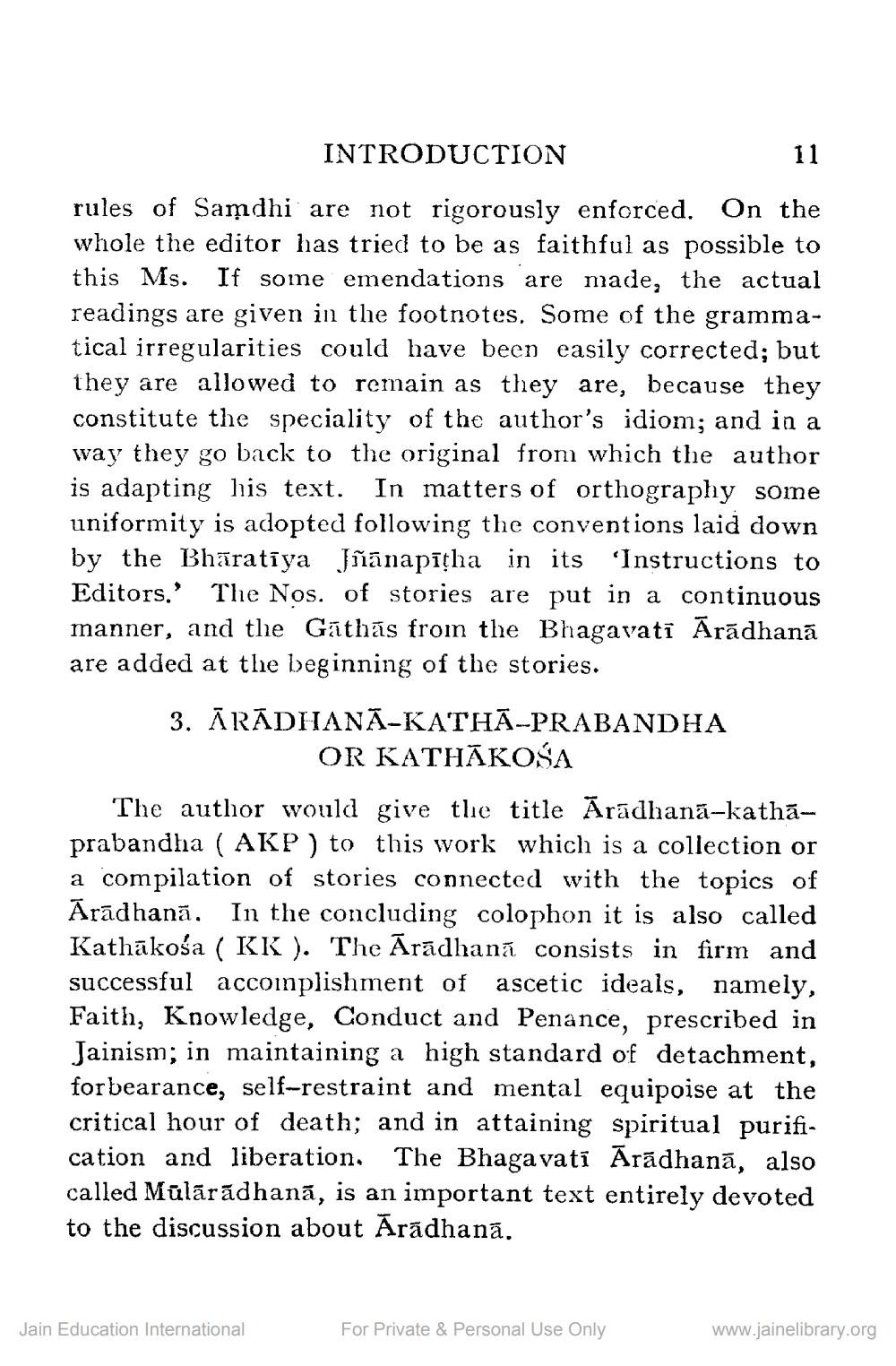________________
INTRODUCTION
11
rules of Saņdhi are not rigorously enforced. On the whole the editor has tried to be as faithful as possible to this Ms. If some emendations are made, the actual readings are given in the footnotes. Some of the grammatical irregularities could have been easily corrected; but they are allowed to remain as they are, because they constitute the speciality of the author's idiom; and in a way they go back to the original from which the author is adapting his text. In matters of orthography some uniformity is adopted following the conventions laid down by the Bhāratīya Jñānapītha in its “Instructions to Editors.' The Nos. of stories are put in a continuous manner, and the Gathās froin the Bhagavati Ārādhana are added at the beginning of the stories.
3. ĀRĀDHANĀ-KATHĀ-PRABANDHA
OR KATHĀKOSA The author would give the title Ārādhana-kathāprabandha ( AKP) to this work which is a collection or a compilation of stories connected with the topics of Ārādhanā. In the concluding colophon it is also called Kathākośa ( KK). The Arādhaná consists in firm and successful accoinplishment of ascetic ideals, namely, Faith, Knowledge, Conduct and Penance, prescribed in Jainism; in maintaining a high standard of detachment, forbearance, self-restraint and mental equipoise at the critical hour of death; and in attaining spiritual purification and liberation. The Bhagavati Ārādhanā, also called Mulārādhanā, is an important text entirely devoted to the discussion about Ārādhanā.
Jain Education International
For Private & Personal Use Only
www.jainelibrary.org




